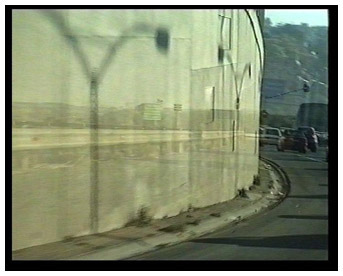


 |


launch interview with Usha Seejarim
Usha Seejarim recasts the ordinary as something worthy of attention. In her videos and installations, she slows down our looking and injects a sense of wonder into subjects as seemingly pedestrian as bus tickets, rice sacks, car lights, and morning shadows. Her work is a unique combination of aesthetic transformation, urban concerns, and her own Indian heritage.
In her work, Seejarim finds the ritual in daily life and mines its essence. She has long been obsessed with the daily commute that orders the lives of so many city and suburban dwellers around the world. She spent a year photographing reflections of her commuter bus in passing shop windows. The riders on this bus formed a temporary, migratory community with its own set of rules and norms. The photographs, installed in a long line framing the gallery space, create a diaristic record of this daily travel ritual and its variations. Cash Ticket, Ash Ticket from Long Distance (1999) is a related piece in which she collaged together several hundred bus tickets in an intricate and colorful pattern that recalls the decorative elements of African cloth or Indian saris. Her explorations of location and dislocation become paeans to the transitory nature of contemporary life.
In the video eight to four (2001), she further investigates the nature and metaphor of daily movement and the mapping of one's own space and society. Seejarim filmed only the shadows of cars driving along the M1 South highway that links Johannesburg with Lenasia, a nearby town that was marked exclusively for Indians during apartheid and continues to be a close community today. In a constant state of flux as they move along, the shadows are beautiful, morphing patches of shade, visible yet intangible. They mark time and register like dream traces of human industry, imagination, and political failings. For Sequence City (2002), her piece in How Latitudes Become Forms, she has sewn plastic sealing clips onto a traditional silk sari, forming the map of Johannesburg. Her unexpected mix of commonplace materials encourages a larger conversation about every-dayness and personal cartographies of identity and location.
Seejarim was nominated for South Africa's 2002 FNB Vita Art Prize. Her work was recently featured in Sublimation, Klein Karoo Nasionale Kunstefees, Oudtshoorn, South Africa (2002); Videoformes 2002, Carnet de Voyages: Afrique du Sud, Paris, France (2002); and Interchange-Moving Images, Camouflage, Brussels, Belgium (2000). In 2000 she was an artist-in-residence at the South African National Gallery in Cape Town.
--Olukemi Ilesanmi











